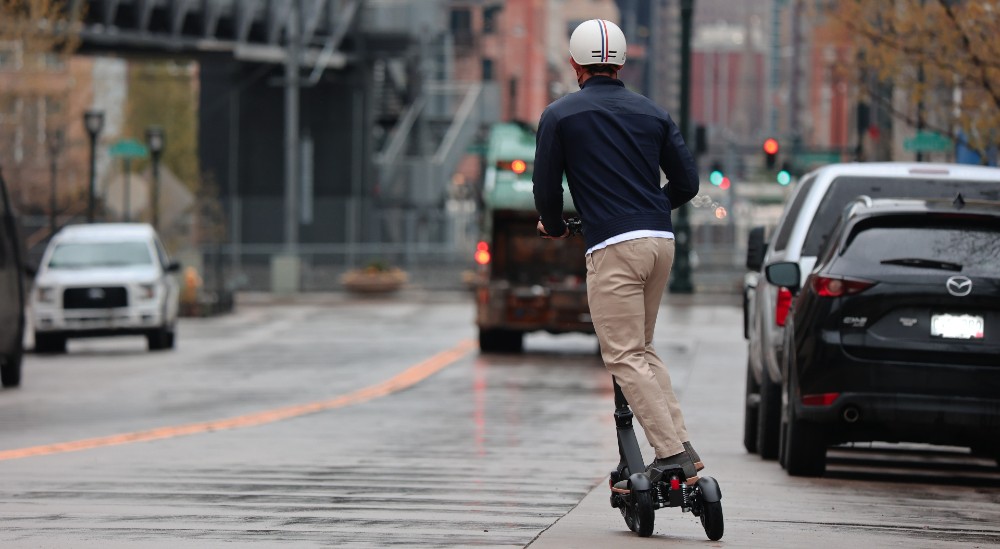What is a vulnerable road user?
Vulnerable road users include:
- Pedestrians
- Motorbikes
- Pedal bike users
- E-scooter users
Has there been an increase in cyclists and pedestrian road users?
Yes. Predictably due to the effect of lockdown on the priorities of the nation, the number of people to be reported walking as their main mode of transport is set to increase by 3.5%. Cycling similarly by 2%. Factors for the increase also include the cost of petrol, the cost of living, and Government’s approach reduce car travel. The social movement toward reducing our carbon footprint is vast and we can only expect the number of vulnerable road users to increase significantly.
Road Accident Facts:
- Vulnerable road users accounted for over half (53%) of all road fatalities in 2020
- 23% being pedestrians
- 20% being motorcyclists
- 10% being pedal cycles
- Most accidents occur when a vehicle is turning left, performing a manoeuvre or changing lanes
- 80 per cent of all adults aged 17 and over in England hold a full car driving licence in 2020
- There has been a steady increase 1.2% per year of road users
What changes to the highway code involve vulnerable road users?
The new changes urge drivers to pay particular attention to vulnerable road users by giving extra distance and prioritising their safety if they’re sharing the road. Pedestrians sit at the top of the hierarchy, followed by cyclists, horse riders and horse-drawn vehicles. But everyone on the road must take into account their own safety, and the safety of other road users.
As per the update, if pedestrians are crossing or waiting at a junction, drivers should give way and allow them to cross. When overtaking, vehicle users must now give more space to vulnerable road users. If overtaking a cyclist at 30 mph, leave at least 1.5 metres. If overtaking riders or horse-drawn vehicles you should leave at least two metres. Also allow 2 metres of space between any pedestrian. And drivers must give priority on roundabout to vulnerable road users.
All road users should know and implement these changes. The are design to make the road safer for everyone. Yet, even with these changes, businesses need to be aware of the dangers to vulnerable road users.

What can a business do to protect vulnerable road users?
Businesses should follow this list of tips and reminders to help reduce the likelihood of being associated with a dangerous road incident. These tips apply to both your drivers and your employees who are vulnerable road users.
- Perform a risk assessment. Businesses need to assess all the variables and weigh up the risk which can include the driver’s driving history, health, driving regulations, and compliance with safety regulations.
- Try to minimise your risk by avoiding routes where there are areas of high incidents that could occur, such as schools and residential areas.
- Ensure the correct vehicle for the job is selected. Take into account the vehicle’s size and safety technology it has available.
- Consider visibility when selecting vehicles for a fleet, pay attention to their mirrors and 360 degree view. Most incidents happen on the nearside of vehicles, focus on vehicles with reduced blind-spots and good nearside visibility.
- Ensure your employee has adequate training for the vehicle selected and also are legal compliant to drive the vehicle.
- Ensure the vehicle has external cameras that work at all speeds, including under 20mph. This is critical for recording your driver’s driving to aid coaching as well as evidence for any incidents that may happen. Most vehicles have a parking camera, ensure your driver knows how to properly operate it.
- Many businesses now employ telematics, such as a black box, which can be used to record speed and help coach drivers on safer driving techniques.
- Ensure the vehicle has internal cameras installed. This can identify fatigue, mobile phone use, and distractions. If identified, alert the driver to refocus or take a break.
- Provide your drivers with instructions and training on how to share the space on the road with others. Communicate and engage with drivers to raise potential risks. Help them understand what the most vulnerable road users are and why.
- Ensure drivers understand rules around cycle lanes and shared pedestrian spaces.
- The highest risk exists when conducting slow speed manoeuvres. So, drivers need to be proficient at checking blind spots, and making sure it’s safe to begin taking manoeuvres.
- Your vulnerable road users who perhaps cycle to work, ensure they are safe with high-visibility jackets and helmets as per the Highway code.
- E-Scooters are becoming much more popular. Make drivers aware of the dangers and how visibility of them can be limited. Both drivers and your e-scooter users need to provide plenty of space.
If an incident does occur, this can be a good opportunity for a learning video. Where an incident has been avoided, develop an in-house training videos to raise the profile as to what is happening out on the road. Reflect on reaction time of drivers, looking at how people respond to traffic and why inattention is dangerous, caused by fatigue, anxiety, or poor work organisation. It’s important to investigate an incident and to look at all factors that led to the incident. This should provide insight into what lead to the driver not been able to cope with that driving environment.

Why is it important for businesses to know how to protect vulnerable road users?
VRU (vulnerable road user claims) are rapidly increasing. They are also often complex and have long life cycles. Becoming embroiled in a VRU case can be expensive, time-consuming and, frequently, avoidable.
Businesses need to pay attention to key claims trends in the commercial space in order to see where the risks are highest. For example a recent trend is incidents involving vulnerable road users and e-scooters. Commercial clients who understand the trends are then able to counter their risk by changing procedures accordingly and communicating effectively with their drivers.
How is commercial insurance affected by the vulnerable road user claims trend?
For underwriting a motor policy, insurers must obtain detailed and accurate information. Weighing up the risks is critical, in order to understand how to stop incidents from happening. Pricing of commercial motor policies hasn’t really changed in principle, but because of the increased volatility and the increased potential for larger losses, prices could go up. However the more information provided, and the more support given to drivers, the more accurate the valuation that can be provided.
If there has been an incident with a vulnerable road user, brokers need as much information as possible. Ways to obtain this information are therefore crucial, helping to provide evidence for what happened and whether the driver has been adequately supported. Information is important in order to make reasonable adjustments, ensuring the incident doesn’t happen again.
It’s particularly important with VRU claims that as much information as possible is provided as soon as possible.

Frequently asked questions about Vulnerable Road User claim:
How much legal advice should a driver receive?
It’s imperative that a driver seeks legal advice before giving any statement to the police. This is because of the potential interest by police in the activity of the driver. Evidence gathered in the early stages can have a massive impact on proceedings, therefore upon an incident occurring, everything of note should be recorded and obtained.
Statements from both driver and witnesses are crucial for civil claims. The initial account taken from the driver will often be taken as the infinitive account. This is because details are often wrong or haven’t been properly picked out.
Get photos of the incident and of marks on the vehicle, this may enable a proper analysis of the accident, helping later to establish what happened.
What statement should drivers give to police for a traffic accident?
Upon a traffic incident, police will want to interview the driver under caution. The driver will usually be tempted to give a short account at the scene, however this is a mistake. Instead drivers should take legal advice before talking to police. Businesses need to prepare drivers for this situation, instructing them where and how to seek legal advice before talking to police.
Are e-scooters regarded as cyclists?
E-scooters are not bicycles and do not have the same road usage rights. However just because an e-scooter is being used illegally, it does not give drivers an automatic defence in case of an incident. Each case will be determined on its own facts. The focus will be on the standard of the driving and what the driver was aware of.
The Government is keen to legislate micro transport. We expect more of these types of claims to be seen in the near future.
Have people got worse at driving after the COVID pandemic?
There is no strong evidence to show driver behaviour has got worse since COVID-19. But roads have gotten emptier as more people transferred to working from home. Emptier roads mean people driving faster and the average speed increasing as traffic flows quicker. Average speed increases generally leads to an increase in road incidents.
Will the new car technology help protect vulnerable road users?
Much more research is needed to see how humans adapt to increased technology in cars. Some of the technology certainly seems to be designed to help prevent incidents form happening, however there is still a long way to go. A worry is that some drivers will become over reliant on technology.
It’s certainly an interesting landscape to keep an eye on over the next few years.
Contact us for your Fleet Insurance
Romero Insurance Brokers is on hand to support all businesses in managing their fleet risks, so if you have any queries about the above please do not hesitate to contact us using the details below. Our clients benefit from the expertise of a dedicated Account Executive working alongside an award-winning claims team to provide professional guidance and support in mitigating all risks that affect a business, so let us know if you would benefit from a discussion about our market-leading motor services.
Does your business have part-year workers?
New holiday rules will affect the contracts of seasonal and part-year workers. The Supreme Court has ruled that workers who work for part of the year are now entitled to holiday allowance. This affects the contracts of seasonal term-time and part-year workers.
Read More



